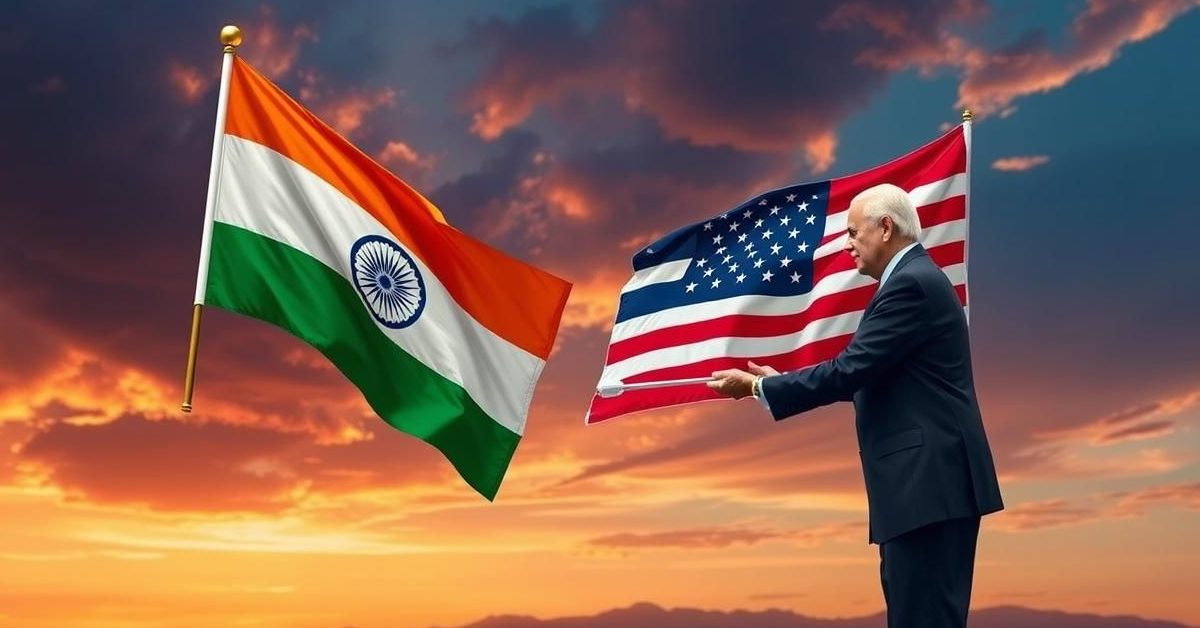India and the US have wrapped up an extended round of trade talks, aiming to finalize an interim deal and potentially avoid reciprocal tariffs.
Trade Negotiations Conclude
India and the United States recently concluded a week-long series of intense trade negotiations. The primary objective of these discussions was to finalize an interim trade agreement.
This deal is considered crucial for India. It aims to help the country avoid potential reciprocal tariffs from the US and secure a competitive advantage over other Asian economies.
Urgent Deadline Looms
The urgency of these talks was heightened by a fresh deadline set by the US: August 1. If an agreement isn’t reached by this date, India could face significant reciprocal tariffs, potentially as high as 26 percent.
While US President Donald Trump has indicated that a deal with India is “close,” the threat of these tariffs remains a considerable pressure point for Indian negotiators.
India’s Long-Term Trade Goals
Beyond the immediate interim deal, Indian government officials have stated their ambition to sign a comprehensive Bilateral Trade Agreement (BTA) by the end of the year.
Such a broader agreement would provide India with crucial market access, particularly for its labor-intensive sectors. It would also ensure a significant tariff differential, further enhancing its competitiveness against other Asian peers.
Agriculture: A Sticking Point
One of the most complex issues encountered during the negotiations revolves around agriculture. The US is actively seeking market access for genetically modified (GM) products, including soya and corn, as part of its broader demand for access across various sectors.
However, this demand faces strong opposition within India. The Indian Coordination Committee of Farmers Movements (ICCFM) has urged the government to exclude all aspects of agriculture from the trade deal to safeguard the interests of Indian farmers.
Understanding Current Tariffs
Currently, only the US baseline tariffs of 10 percent are in effect. Additionally, sectoral tariffs on products like steel and aluminum, along with fentanyl-related tariffs on China, are already impacting global trade flows.
Officials have noted that these existing tariffs have already led to higher duty collections for the US and a reduction in imports from China in specific sectors.
Broader Geopolitical Context
The trade discussions are also taking place amidst a broader landscape of geopolitical tensions. US President Trump has recently threatened steep tariffs on BRICS countries, citing their perceived challenge to the US dollar.
He has also issued warnings of duties on buyers of Russian oil. This is particularly relevant for India, which is a significant importer of Russian oil, adding another layer of complexity to its trade relations.
- India and the US have concluded a week-long round of trade negotiations.
- An August 1 deadline looms, with India potentially facing up to 26 percent reciprocal tariffs if no deal is reached.
- A key sticking point in talks is US demand for market access for genetically modified (GM) agricultural products.
- India aims for a comprehensive Bilateral Trade Agreement (BTA) by year-end.
- Existing US tariffs on steel and aluminum are already impacting Indian exports.
These ongoing negotiations underscore the intricate balance between national economic interests and global trade dynamics.














